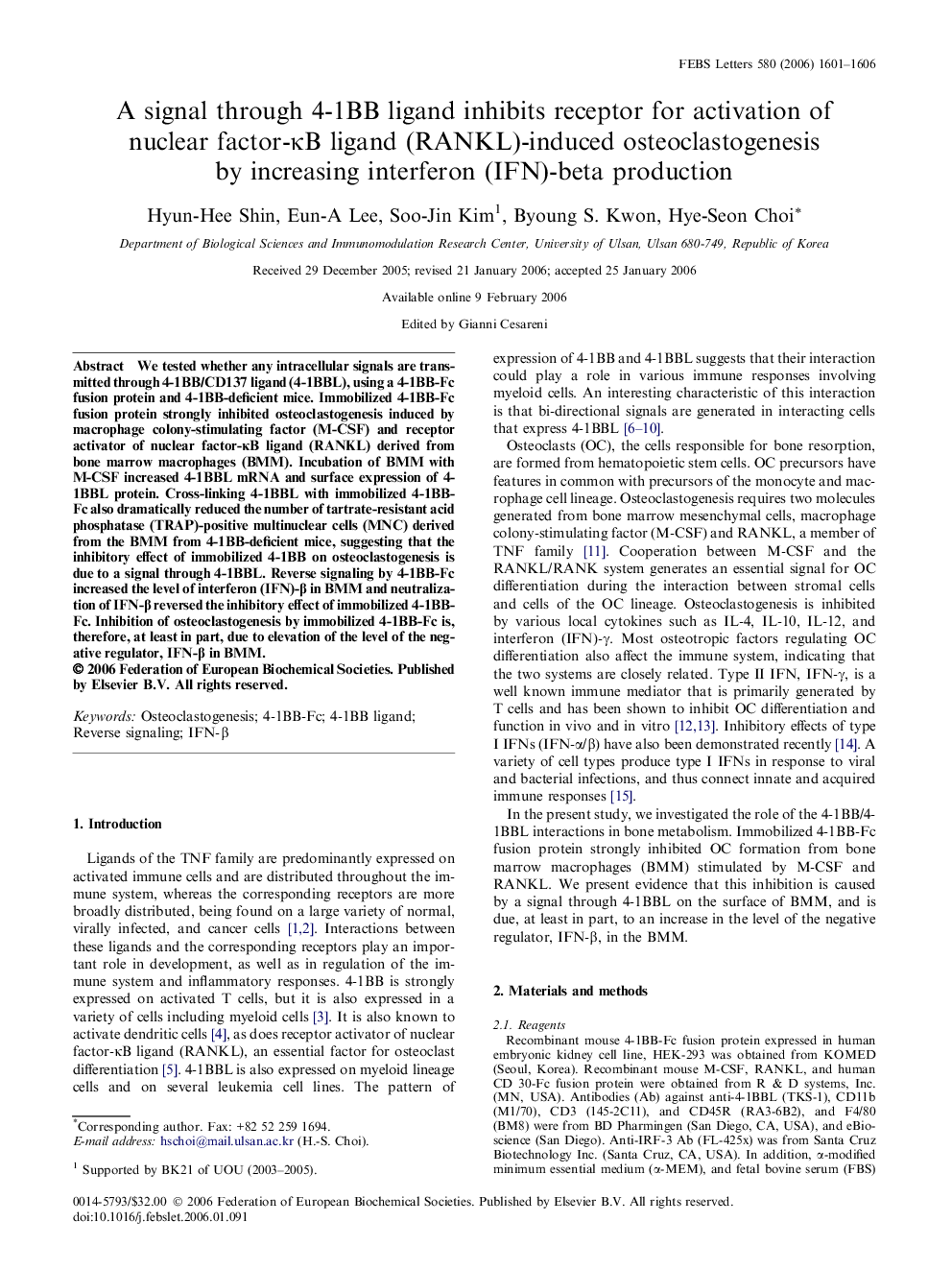| کد مقاله | کد نشریه | سال انتشار | مقاله انگلیسی | نسخه تمام متن |
|---|---|---|---|---|
| 2052972 | 1074249 | 2006 | 6 صفحه PDF | دانلود رایگان |

We tested whether any intracellular signals are transmitted through 4-1BB/CD137 ligand (4-1BBL), using a 4-1BB-Fc fusion protein and 4-1BB-deficient mice. Immobilized 4-1BB-Fc fusion protein strongly inhibited osteoclastogenesis induced by macrophage colony-stimulating factor (M-CSF) and receptor activator of nuclear factor-κB ligand (RANKL) derived from bone marrow macrophages (BMM). Incubation of BMM with M-CSF increased 4-1BBL mRNA and surface expression of 4-1BBL protein. Cross-linking 4-1BBL with immobilized 4-1BB-Fc also dramatically reduced the number of tartrate-resistant acid phosphatase (TRAP)-positive multinuclear cells (MNC) derived from the BMM from 4-1BB-deficient mice, suggesting that the inhibitory effect of immobilized 4-1BB on osteoclastogenesis is due to a signal through 4-1BBL. Reverse signaling by 4-1BB-Fc increased the level of interferon (IFN)-β in BMM and neutralization of IFN-β reversed the inhibitory effect of immobilized 4-1BB-Fc. Inhibition of osteoclastogenesis by immobilized 4-1BB-Fc is, therefore, at least in part, due to elevation of the level of the negative regulator, IFN-β in BMM.
Journal: FEBS Letters - Volume 580, Issue 6, 6 March 2006, Pages 1601–1606